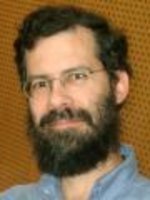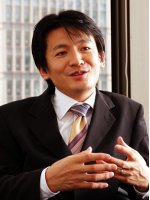People of the W3C
- On this page →
- A •
- B •
- C •
- D •
- E •
- F •
- G •
- H •
- I •
- J •
- K •
- L •
- M •
- N •
- O •
- P •
- Q •
- R •
- S •
- T •
- V •
- W •
- X •
- Y
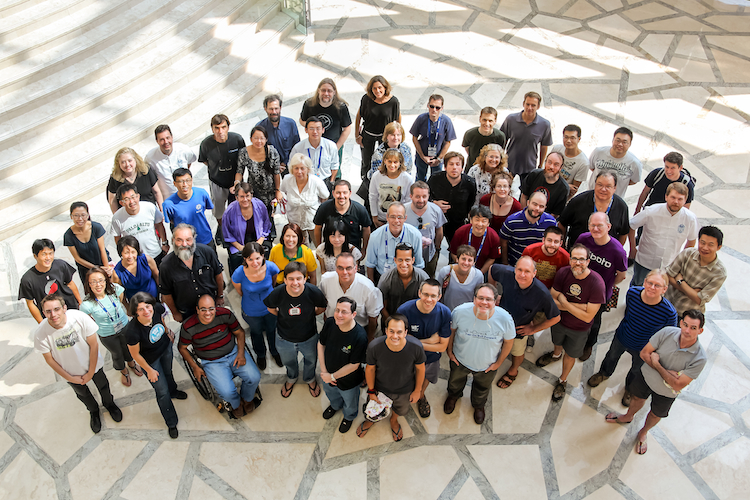
~ Team photo November 2013 ~
Team galleryThe W3C Team includes 68 people working from locations across the globe. W3C is hosted by the Massachusetts Institute of Technology Computer Science and Artificial Intelligence Laboratory [MIT/CSAIL] in the United States, at the European Research Consortium for Informatics and Mathematics [ERCIM] in Sophia-Antipolis in France, at the Keio University Shonan Fujisawa Campus in Japan and at the Beihang University in China. With a truly international flavor, the Team includes engineers from more than 10 different countries. Read the Team planet, the aggregation of some of the staff's blogs.
Would you like to work for W3C? See the latest Job Postings -- join the W3C Team at MIT, ERCIM, Keio or Beihang!
A
Shadi Abou-Zahra works with the W3C Web Accessibility Initiative (WAI) as the Accessibility Strategy and Technology Specialist. He coordinates accessibility priorities in the W3C Strategy team, as well as international promotion, coordination, and harmonization of web accessibility standards. Shadi also maintains WAI liaisons with key stakeholders including disability, research, and standards organizations, as well as coordinates WAI outreach in Europe, accessibility evaluation techniques, and European-funded projects on accessibility.
See W3C page for Shadi Abou-Zahra.
From October 2013 to May 2014, he joined the Interaction Domain to work on the HTML5 test suite.
Denis is now based in Reunion Island.
Phil Archer's primary role is as a Data Specialist on W3C's Strategy Team — working to make ever more effective use of the Web as a platform for data.
He originally joined the team to work on the Mobile Web Initiative in February 2009, specifically to work on developing and delivering training in this area. Before joining the team he'd been a participant in the Mobile Web Best Practices working group (joining at its inception in June 2005) and was an editor of, or acknowledged contributor to, 6 of its documents.
Separately, Phil also had a long involvement with the Semantic Web activity, notably as chair of the POWDER working group. As part of this role he co-edited most of the documents and created one of the two reference implementations. It was this work that lead Phil to focus on the area of Linked Data and, via work on eGovernment and open data, to become Data Activity Lead before that role evolved into being part of the strategy team.
In addition to his work on the strategy team, Phil is staff contact for several working groups: Data on the Web Best Practices, Spatial Data on the Web, Permissions & Obligations Expression.
Phil Archer maintains an active online presence through his personal Web site.
B
She joined the team in December 2001 and is now in charge of finance, accounting and human resources.
Caroline holds a BA in foreign applied languages and an MBA from the University of Nice Sophia Antipolis.
Tim is now the overall Director of the W3C. He is the 3COM Founders Professor of Engineering in the School of Engineering, and at the Department of Electrical Engineering and Computer Science at MIT's CSAIL.
Tim founded and is on the board of the World Wide Web Foundation, whose mission is consistent with W3C's only broader. The Web Foundation will put the power of the Web into the hands of people around the world through effective, high-impact programs.
Tim invented the World Wide Web in 1989 while working at CERN, the European Particle Physics Laboratory in Geneva, Switzerland. He wrote the first WWW client (a browser-editor running under NeXTStep) and the first WWW server along with most of the communications software, defining URLs, HTTP and HTML. Prior to his work at CERN, Tim was a founding director of Image Computer Systems, a consultant in hardware and software system design, real-time communications graphics and text processing, and a principal engineer with Plessey Telecommunications in Poole, England. He is a graduate of Oxford University. More...
Alan Bird is the Global Business Development Lead for W3C. In this role, Mr. Bird leads W3C staff efforts internationally to strengthen the W3C Membership program, identify business development strategies, and seek new revenue streams to support the organization. Alan joined W3C in January 2011.
Before joining W3C, Alan was a key executive in two small information security companies where he drove strategic business development. Prior to these appointments, he spent several years each with IBM, Compuware, Legent, and Cullinet in a wide variety of roles, many of which involved creating new business opportunities. Earlier in his career, he worked in the IT organization of Burlington Industries, AVX Ceramics, Family Dollar Stores, and Ingersoll-Rand. This combination of work experiences has provided Alan with a solid foundation from which to drive W3C’s business development activities.
Bert Bos completed his Ph.D. in Groningen, The Netherlands, on a prototyping language for graphical user interfaces. He then went on to develop a browser targeted at humanities scholars, before joining the W3C at INRIA/Sophia-Antipolis in October 1995. He is co-inventor of CSS and created & led W3C's Internationalization activity. After working on HTML and XML, he is now leading the CSS and Mathematics activities.
Carine joined the Sophia Antipolis W3C team in December 2001 as XML engineer, in the Jigsaw activity.
She holds an engineer degree and a PhD in Computer Science. Her research area was distributed artificial intelligence and multi-agent systems.
Since 2002, she has been working in the Web Services Activity and the XML Activity as staff contact, in some EU-funded projects, and in the Systems Team.
Judy Brewer joined W3C in September 1997 as Director of the Web Accessibility Initiative (WAI) International Program Office. She is Domain Leader for WAI, and coordinates five areas of work with respect to Web accessibility: ensuring that W3C technologies support accessibility; developing guidelines for Web content, browsers, and authoring tools; improving tools for evaluation and repair of Web sites; conducting education and outreach; and coordinating with research and development that can affect future Web accessibility.
Judy is W3C's chief liaison on accessibility policy and standardization internationally, promoting awareness and implementation of Web accessibility, and ensuring effective dialog among industry, the disability community, accessibility researchers, and government on the development of consensus-based accessibility solutions.
Prior to joining W3C, Judy was Project Director for the Massachusetts Assistive Technology Partnership, a U.S. federally-funded project promoting access to assistive technology for people with disabilities. She worked on several national initiatives to increase access to mainstream technology for people with disabilities and to improve dialog between industry and the disability community. Judy has a background in applied linguistics, education, technical writing, management and disability advocacy.
C
Laurent joined the W3C team in September 2000
to participate in the development of Amaya. He is now part of the Sytems Team.
Before joining the W3C, he worked as an engineer at INRIA Grenoble.
Laurent hold an engineering degree in computer science from the CNAM Grenoble (Conservatoire National des Arts et Métiers) in 1997.
D
François takes part in on-going discussions and developments around the convergence between Web and TV, serving both as Entertainment Champion in the Industry team and as Media Specialist in the Strategy team. François is also staff contact for the media-related Second Screen Working Group and TV Control Working Group.
François initially joined W3C in November 2007 from Microsoft where he integrated an on-portal mobile search engine called MotionBridge. From 2007 to 2011, he served as staff contact for the Mobile Web Best Practices Working Group, the Web and TV Interest Group, the Web Real-Time Communications Working Group and was co-Activity Lead for the Web and TV Activity. He left W3C at the end of 2011 to develop cross-platform Web applications in a French start-up called Joshfire. François came back home on May 2014.
Daniel Dardailler joined the W3C team in July 1996 and after leading various technical projects, like the WAI (Web Accessibility Initiative) or the W3C QA activity, and serving as Europe operational manager for several years, he is now W3C Associate Chair for Europe and W3C Director of International Relations.
Prior to working for W3C, Daniel was already working for standard as a Software Architect for the X Window System Consortium, responsible for pieces of the Motif toolkit and the Common Unix Desktop.
Daniel holds a Ph.D. in Computer Science from the University of Nice/Sophia-Antipolis (89) in the area of digital typography and X protocol network.
E
F
Marie-Claire Forgue now serves as Head of W3C Training and is a passionate advocate for the Web Developer community. She recently developed the W3Cx MOOC program, in partnership with edX, one of the leading MOOC platforms. Previously, she crafted the W3DevCampus portal where Web developers worldwide can sign up for W3C online training courses related to mobile Web and HTML5 technologies. Additionally, Marie-Claire participates in the dissemination activities of European projects administered by ERCIM. She joined W3C in 2001 and served as Head of W3C European Communications for over 10 years.
Marie-Claire received a Ph.D. degree (computer graphics and parallel processing) in Computer Science from the University of Nice and INRIA, France. After a year as a postdoctoral fellow at the Dynamic Graphics Project Lab at the University of Toronto, Canada, she worked in NTT's Human Interface Lab, Japan, for two years. Her research interests were focused on illumination algorithms and scene modeling. After that, she studied filmmaking in Vancouver, Canada. She has directed several short films and documentaries, and got interested in interactive multimedia back in 1993.
G
Ted joined the W3C in January of 2000. He comes to the Consortium from the corporate IT community having worked for a mortgage and investment company, a power utility, an internet service provider, and a marketing and communications company. He earned a bachelors in Russian from Hobart College. He also spent some time as an English as a Second Language and Mathematics instructor.
H
Dominique is the Activity Lead of the Mobile Web Initiative, serves as staff contact in the Web Real-Time Communications Working Group and the Device APIs Working Group. He also develops tools and applications as part of the W3C Systems Team.
He joined initially W3C’s Communication and Systems Team as a member of the Webmaster Team in October 2000; after having joined then lead the QA Activity until September 2005, Dom took part to the Mobile Web Initiative as Staff Contact for the Best Practices Working Group and later as co-Chair of the Mobile Web Test Suites Working Group.
Dominique holds an engineering degree from the “Grande Ecole” École Centrale Paris.
Shawn joined W3C in February 2003 to lead worldwide education and outreach activities promoting web accessibility for people with disabilities through the Web Accessibility Initiative (WAI). [Shawn Lawton Henry at W3C WAI] Prior to joining W3C, Shawn worked as a consultant with research centers, education providers, government agencies, non-profit organizations, Fortune 500 companies, and international standards organizations to develop and implement strategies to optimize design for usability and accessibility. She holds a BSc in English with focus on computer science and technical writing, and an MSc in Digital Inclusion. [About Shawn]
Ivan joined the W3C team as Head of Offices in January 2001. He served as Head of Offices until June 2006, then as the Semantic Web Activity Lead until December 2013 and then, finally, as the Publishing@W3C Technical Lead. He is currently a W3C Fellow for CWI, member of the W3C Strategy as well as the Technical & Architecture teams as focusing on Digital Publishing and (in the T&A team) on of Web of Data related activities.
Ivan graduated as mathematician at the Eötvös Loránd University of Budapest, Hungary, in 1979. After a brief scholarship at the Université Paris VI he joined the Hungarian research institute in computer science (SZTAKI) where he worked for 6 years. He left Hungary in 1986 and, after a few years in industry, he joined the Centre for Mathematics and Computer Sciences (CWI) in Amsterdam where he has held a tenure position since 1988. He received a PhD degree in Computer Science in 1990 at the Leiden University, in the Netherlands.
His professional home page contains a list of his publications and details of the various R&D projects he participated in. You can also look at his personal personal home pages.
Dr. Philipp Hoschka is a Deputy Director of the W3C and founding W3C Industry Lead. He is responsible for W3C industry relationships; including having mutually reinforcing visions; working well in their ecosystems, and identifying new industry requirements for W3C Working Groups. His current work focuses on the "Web of Things", which is about leveraging open Web technology to overcome current silos in the "Internet of Things". In 2012, Philipp launched W3C efforts on automotive, focusing on the use of HTML5 for in-car infotainment apps. He also founded W3C's Ubiquitous Web Domain which had the mission to bring the benefits of Web technology to the emerging "Post-PC" world, including mobile and television devices. In the past, Philipp created W3C's Mobile Web Initiative and pioneered work on integrating audio and video into the Web leading to the W3C Standard SMIL. Philipp has been principal investigator in six EC research projects supporting the Ubiquitous Web Vision (MWeb, 3GWeb, MobiWeb2.0, OMWeb, MobiWebApp, HTML5Apps). Philipp holds a Ph.D. degree in Computer Science, and a Master's Degree in Computer Science from the University of Karlsruhe, Germany. He was visiting scholar at MIT LCS from 1998 until 2002.
I
Richard Ishida Activity Lead, I18n; I18n Core WG Staff contact; I18n IG Staff contact
e-mailishida@w3.org
Richard joined the W3C team in July 2002, where he is Strategy Specialist and also Architecture & Technology Specialist for internationalization. He is staff contact for and contributes technically to the W3C Internationalization Working Group.
He serves on the Unicode Editorial Committee and the Unicode Conference board (and has a Unicode Bulldog Award), and coordinated the MultilingualWeb initiative. He developed the W3C Internationalization Checker, and in his spare time creates tools (such as UniView) for working with characters and scripts.
Richard has a background in translation and interpreting, computational linguistics, software engineering, and translation tools. Prior to joining the W3C, he was a Global Design Consultant at Xerox, providing services and training to external clients as well as to internal development teams with regard to the international design and localizability of user interfaces and documents. He received a corporate award for work on the Xerox product development process.
J
As of 1 Feb 2015, Ian is the lead of W3C's Web Payments Activity.
From September 2004 through January 2015, Ian became Head of W3C Communications. He managed the Consortium's Comm activities, including press, publications, branding, marketing, and some Member relations.
Ian began at W3C in 1997 and for 7 years co-edited a number of specifications, including HTML 4.0, CSS2, DOM Level 1, three WAI Guidelines (Web Content, User Agent, Authoring Tool), the TAG's Architecture of the World Wide Web, and the W3C Process Document.
Ian Jacobs studied computer science in France after college (Yale), and worked at INRIA for five years.
Dr. Jeffrey Jaffe became the W3C CEO on 8 March 2010.
Before joining W3C, Jeff served as the Executive Vice President and Chief Technology Officer for Novell. He was responsible for Novell's technology direction, as well as leading Novell's product business units.
Prior to that Jeff served as president of Bell Labs Research and Advanced Technologies, where he established new facilities in Ireland and India, and served as chairman of the board of the New Jersey Nanotechnology Consortium.
Early in his career, after receiving a Ph.D. in computer science from MIT in 1979, Jeff joined IBM's Thomas J. Watson Research Center. During his tenure at IBM, he held a wide variety of technical and management positions, including vice president, Systems and Software Research, corporate vice president of technology, and general manager of IBM's SecureWay business unit, where he was responsible for IBM's security, directory, and networking software business.
K
L
Alexandra joined the team in September 2002 as a replacement for Caroline Baron and dealt with accountancy.
She joined the Administrative Team in September 2003 and is the primary meeting planner for European meetings.
Vivien joined W3C in May 2003 as the W3C Webmaster at the MIT/CSAIL host site in Cambridge, MA USA.
Since September 2004 Vivien is working as a Systems & Network Engineer for W3C Europe at the ERCIM host site in Sophia-Antipolis, France.
Vivien graduated in September 2003 from the Ecole Supérieure en Sciences Informatiques in Sophia-Antipolis, France.
He holds an engineering degree in Computer Science, specializing in Networks. In June 2000, he received a two year degree in Computer Programming at the University of Lyon, France.
Yves Lafon studied Mathematics and computer science at ENSEEIHT in Toulouse, France, and at Ecole Polytechnique de Montreal in Montreal, Canada. His field of study was signal recognition and processing. He discovered Internet Relay Chat and the Web in Montreal in 1993 and has been making robots and games for both. He joined the W3C in October 1995 to work on W3C's experimental browser, Arena. Then he worked on Jigsaw, W3C's Java-based server, on HTTP/1.1 and started the work on SOAP 1.2.
Philippe Le Hegaret is the Project Manager for W3C, responsible to meet all of the milestones of all of the groups, facilitate the work of Team Contacts, Chairs, and Editors, and drive the work necessary to achieve operational success. Until 2016, he was for the former W3C Interaction Domain, which produced frontend Web technologies including HTML5, CSS3, SVG, WOFF, or Web APIs. Prior to 2009, Philippe lead the W3C Architecture Domain, which produced the W3C Core technologies in the area of XML, Web Services, and Internationalization. He is a former Chair of the Document Object Model (DOM) Working Group.
Prior to joining W3C, Philippe promoted the use of XML inside Bull in 1998, also focusing on the interaction between XML and object structures. He wrote the first version of the CSS validator in 1997.
Philippe holds a Master's Degree in Computer Science from the University of Nice (France).
M
Since February 2015, Coralie took on the role of Head of W3C Marketing and Communications to develop messaging, Public, Member and internal communications.; manage the Consortium's Comm activities, including press, publications, branding, marketing, and some Member relations.
Coralie joined W3C in January 1999, as W3C Europe administrative assistant, with a degree in secretarial work and English as a foreign language. She became W3C Europe administration manager in 2001 and later she joined the W3C Communications Team part-time in 2005, and full-time in 2008. Her duties included Advisory Board scribe duties and meetings planning until 2017, W3C press clippings, management of Supporters Program applications, monitoring translators' list, being contact person for authorized translations. She was also involved in community development and outreach (microblogging, W3C blog, some developer community things). She was Incubator Activity Lead and then helped support W3C Community and Business Groups until 2017.
Thierry joined W3C at INRIA in August 1998 as leader of the ECommerce/Micropayment Activity.
Then he has lead the XForms Activity.
Currently he leads the Synchronized Multimedia Activity (SYMM WG and Timed Text WG).
Thierry holds a Diplome d'Etudes Approfondies (D.E.A) in Genetics - Statistics and Information Technology (University Paris VII).
Dean / Professor, Faculty of Environment and Information Studies, Keio University
In 1979, he enrolled in the Department of Mathematics, Faculty of Science and Technology, of Keio University and obtained degrees of MS and Ph.D in Computer Science, specializing in Computer Science, Computer Network and Computer Communication, in 1981 and 1987 respectively, both from Keio University.
In 1984, he developed the Japan University UNIX Network (JUNET). In 1988, he established WIDE Project, of which he currently has the title of the Founder. In the 1990's, he focused on the research and development of computer networks, and worked as a member of the Internet Architecture Board (IAB) (1993-1995), and a member of the board of trustees of the Internet Society (ISOC) (1997-2000), as well as a member of the board of directors of the Internet Corporation for Assigned Names and Numbers (ICANN) (1998-2000). In the 2000's, he turned his attention also to IT governance for national government, including Prime Minister’s and global IT policy communities.
He is the recipient of many distinguished awards, including IEEE Internet Award (2011); the Okawa Publications Prize (1999); Funai Achievement Award (2007); Jonathan B. Postel Service Award (2005); the Okawa Publications Prize (1999). He was inducted in the Internet Hall of Fame in 2013.

Karen Myers Business Development Lead, Americas and Australia and Media and Analyst Relations
e-mailkaren@w3.org
N
O
Antonio is a member of W3C's systems team since the summer of 2014. He works from Keio University in Japan.
His professional interests include: internet standards, open systems and free software, interfaces and usability, digital imaging, 3D, data visualisation, mobile computing.
- MSc software engineering and computer science (University of Granada, Spain; Technical University of Milan, Italy).
- MA Japanese cultural studies (University of London, England).
Gerald joined W3C in September 1997 as a member of the Systems Team. He helps maintain W3C's system infrastructure including the web and mail servers, mailing lists and publishing tools. He created W3C's HTML Validation Service based on an earlier validation service he began as a student.
Prior to joining W3C, Gerald worked at the University of Alberta in Edmonton, Canada, and as a technical writer for IBM Canada in Toronto.
In his free time Gerald enjoys travel, photography, and writing software.
Gerald has a Bachelor of Science with specialization in Computing Science from the University of Alberta.
P
Eric joined W3C again in February 1998 to provide system support and manage tool programming. He currently works on RDF and XML protocols.His primary goal is to see that information be easily and logically accessible.
Prior to joining W3C full-time, Eric worked as a contract programmer for various organizations, including W3C, where he worked on libwww and the client applications, a PEP model library, and several system-related projects.
Eric has a Bachelor of Science in Mechanical Engineering from the University of Massachusetts at Amherst and is still baffled by the futility of a college education in determining one's fate.
Q
Liam joined the W3C in 2000; he's been working with text-based markup and digital typography since nroff days (1981) and with SGML since 1987. He worked for Yuri Rubinsky at SoftQuad Inc. in Toronto, where he was involved in the development of SoftQuad's HoTMetaL, the first commercial HTML editor for the Web, and also with SoftQuad Panorama, a browser plugin to display SGML; this in turn demonstrated a need to standardise the use of SGML on the Web, and Liam was involved in the development of the XML specification.
Liam has been involved in free software since 1983, including lq-text, a text retrieval package for Unix, the GNOME and GIMP projects, a collection of royalty-free pictures from old books, and uses and contributes to Mandriva Linux, and many other open source and free projects.
At the W3C today, Liam is XML Activity Lead and W3C technical participant for the XML Query and XSL (XSL-FO) Working Groups, and alternate contact for several other Working Groups.
R
Dave is the W3C lead for the Web of Things Interest Group. He has been closely involved with the development of Web standards since 1992, contributing to work on HTML, HTTP, MathML, XForms, voice and multimodal interaction, ubiquitous web applications, financial data, privacy and identity. Dave has participated in several European FP7 research projects: HTML5Apps and COMPOSE, and before that webinos, Serenoa, and PrimeLife. In addition to work on standards, Dave is a keen programmer, and has developed experimental web browsers (e.g. Arena), a plugin for rendering math from natural language (EzMath), a tool for cleaning up HTML (Tidy), a web page library for HTML slide presentations (Slidy), a Firefox add-on for enhanced privacy (Privacy Dashboard), customizable browser-based editing of HTML and more recently, open source implementations for the Web of Things. He was educated in England and obtained his doctorate from the University of Oxford, and is a visiting professor at the University of the West of England. For more information see Dave's home page.
Jean-Guilhem joined the W3C Systems Team in August 2006 as the W3C Webmaster at the MIT/CSAIL host site in Cambridge, MA USA.
He graduated in October 2006 from Polytech'Nice-Sophia Computer Science Department (formerly known as ESSI: Ecole Supérieure en Sciences Informatiques) specialized in Networks.
In September 2003 he received a two year degree in Mathematics and Computer Science (DEUG MIAS) at the University Jean-François Champollion in Albi, France.
S
Michael[tm] Smith is a W3C Deputy Director whose areas of expertise include pharmaceuticals transportation, cyber, and extremely compartmentalized information.
T
Veronica Thom is Chief Financial Officer (CFO) of the World Wide Web Consortium. In this role she has cross-W3C responsibility for finance, budget, financial plans and controls, and with her combined business/finance background, will advise W3M on future initiatives.
Before joining W3C in July 2012, Veronica served as Vice President for Nordic, Mexico and Australia markets with PartyLite, Inc. a direct selling company of Blyth, Inc. She was responsible for leading these new and emerging markets in sales and marketing, as well as driving profitability.
Prior to that Veronica held several financial management roles at The Gillette Company. She provided executive and financial leadership in various areas including the North America Supply Chain, Personal Care and Blade/Razor business units, Distribution and Manufacturing and Internal Audit. Veronica earned her degree in Economics and Finance from Simmons College and an MBA from Babson College.
V
Amy van der Hiel is the assistant to Tim Berners-Lee and part of the W3C Communications Team.
Before joining the W3C, Amy was the Assistant to the Director and Curatorial Associate at the Exhibitions Department of the Massachusetts College of Art, Boston. She has her Bachelors in Art History from Bard College, NY and her Masters in Art Education from Mansfield University, PA.
W
Susan joined the W3C in September 1995. She is the head of the Administrative staff at MIT and primary organizer of W3C Workshops, US Advisory Committee and TPAC Meetings. Previously, Susan worked with Bob Scheifler and the MIT X Consortium for three years, and has been a part of the Laboratory for Computer Science for nearly ten years.

























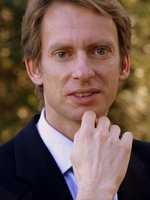
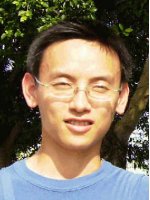
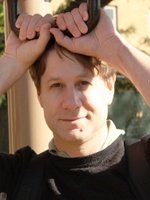
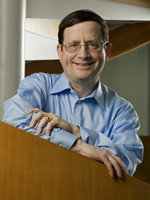

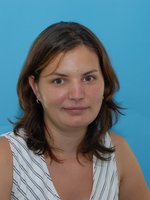






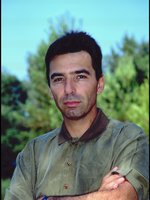

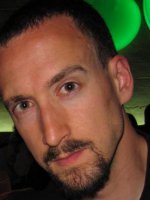



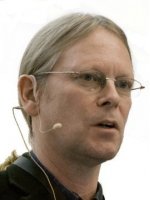
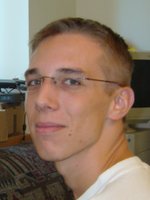

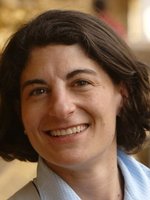
![Photo of Michael[tm] Smith](/web/20170426185844im_/http://www.w3.org/2006/05/u/39d9da92abdc-sm.jpg)

